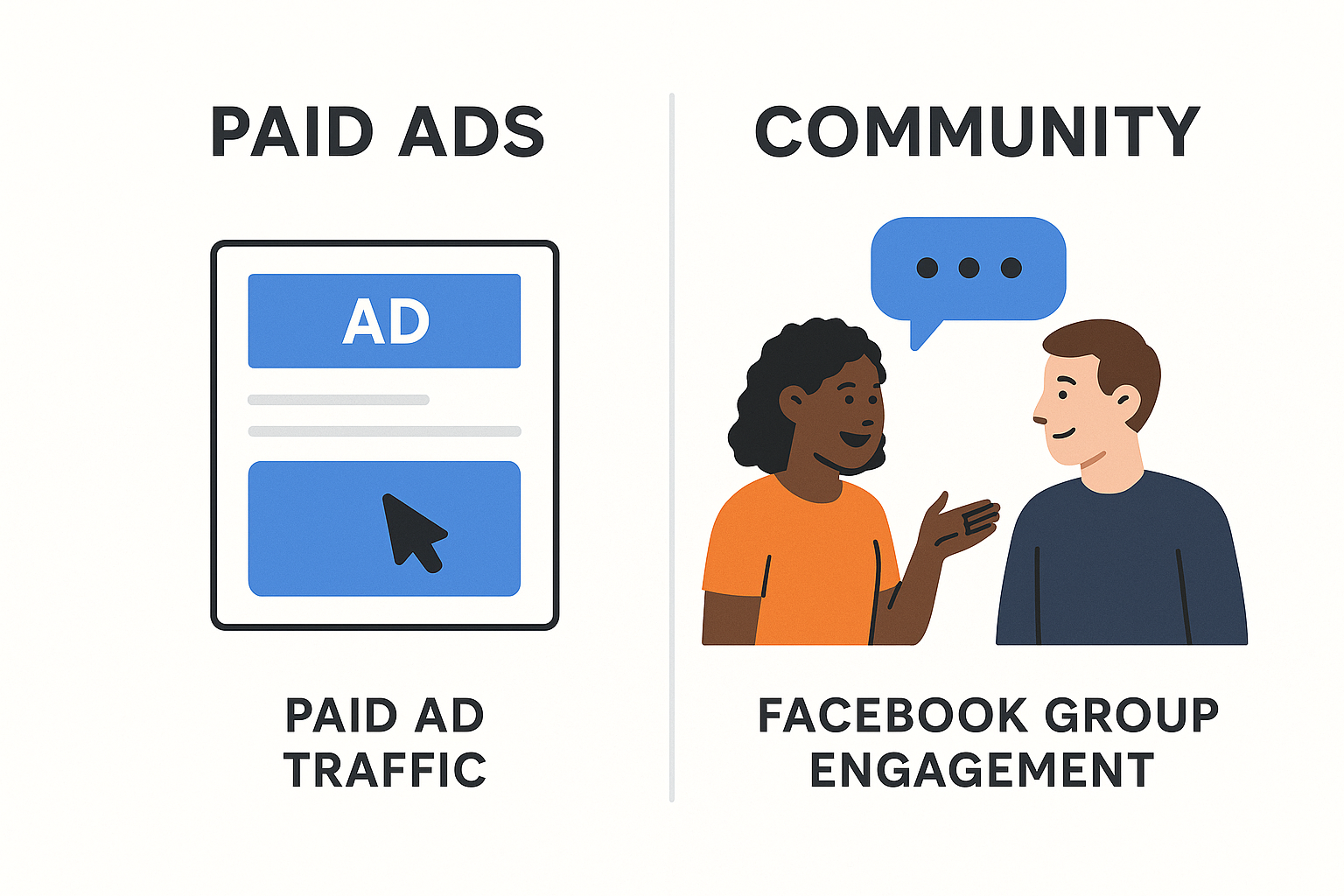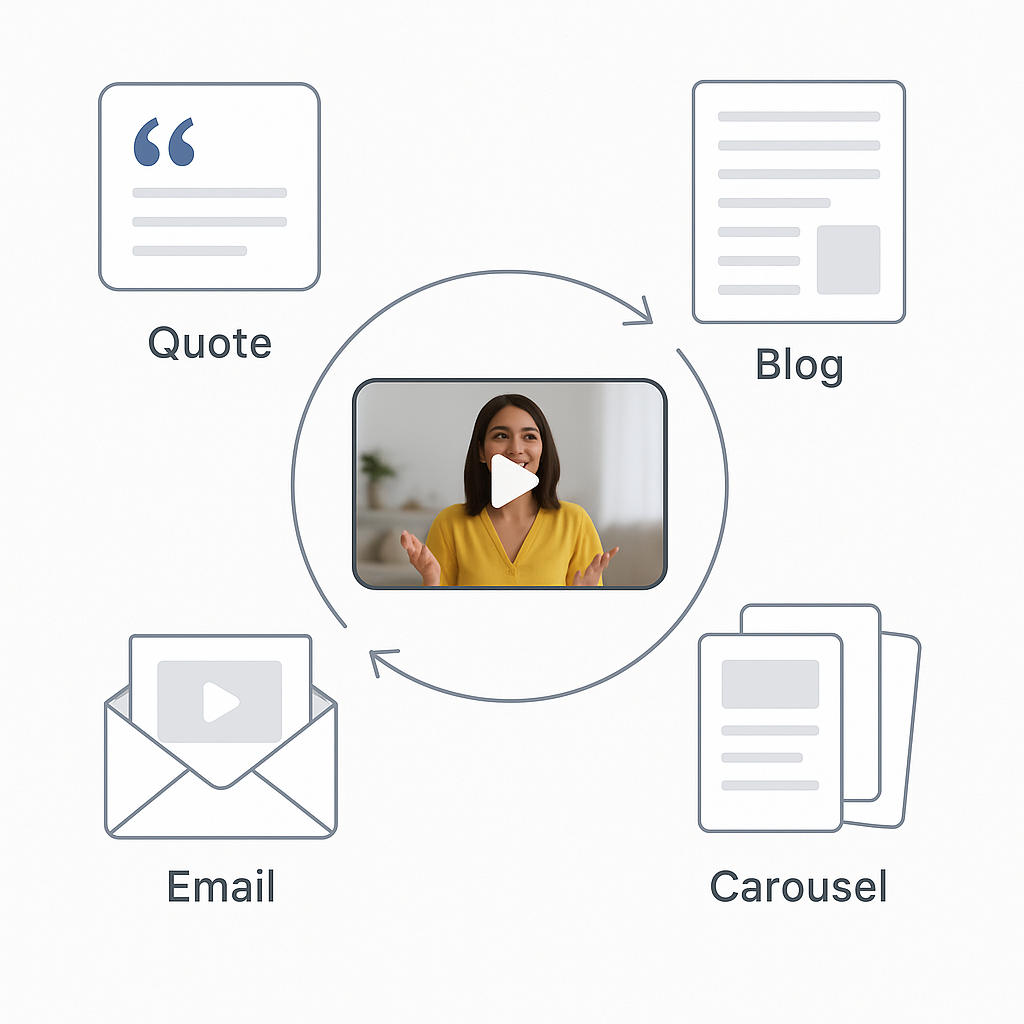If you run paid Facebook campaigns, you already know how much goes into getting that click. But the question smart advertisers ask is: what happens after the click?
More often than not, you’re pouring money into cold audiences without building long-term loyalty. That’s where Facebook Groups can help you stop the bleed and turn casual leads into active community members. But they only work if you use them as a strategic extension of your paid media — not an afterthought.
So how do you make Facebook Groups work with your ad strategy?
Let’s break it down.
1. Use Paid Traffic to Fuel the Right Kind of Group Growth
Facebook doesn’t push Group discovery like it used to. If you want engaged members, you need to be intentional. Start by using your paid campaigns to drive targeted people into your Group — not just to convert, but to stay.

Here are four ways to do it well:
-
Link to your Group on thank-you pages. When someone signs up, buys, or downloads a lead magnet, give them a clear invitation to continue the conversation inside a private Group.
-
Run retargeting campaigns with "Join the Group" CTAs. These work especially well with warm audiences, like video viewers or site visitors who didn’t convert. It’s a low-pressure way to stay top-of-mind.
-
Embed Group links inside nurture emails and post-purchase flows. Don’t just say "follow us on Facebook". Instead, explain the value of joining the Group: tips, early access, or real-time support.
-
Use QR codes at live events or physical packaging. This is especially useful for ecommerce or hybrid businesses that want to bridge the digital and physical experience.
Want more ideas to build visibility? Check out Get Your Facebook Group Noticed: Attract Members Who Actually Engage.
2. Turn Your Group Into a Feedback Engine
One of the best parts of running a Facebook Group is that it gives you unfiltered access to what your customers are thinking, feeling, and struggling with.
That input is gold. Use it to shape:
-
Ad copy. Borrow exact phrases your users post when describing pain points or product wins.
-
Creative. Test new formats based on what gets attention in the Group: short tutorials, quick wins, or even memes.
-
Offers. Poll your Group before launching a new promo or bonus. What sounds better: "free shipping" or "free onboarding"?
Groups also give you a way to spot objections before they ruin your conversion rates. If someone comments, "Do I need this if I already have [X]?", that’s a sign your landing page or ad needs work.
For more ideas on how Groups help feed campaign performance, explore How to Use Facebook Groups to Support Your Marketing Funnel.
3. Create a Post-Click Experience That Builds Loyalty
Most ads focus on top-of-funnel results. Groups let you build beyond that.
Once someone converts (or even shows interest), your job isn’t done. Use your Facebook Group to:
-
Deliver onboarding content. Welcome posts, feature highlights, or "how-to" tutorials can help reduce churn.
-
Highlight success stories. Pin member wins or testimonials. This builds belief and encourages others to take action.
-
Keep buyers engaged between purchases. Use discussion threads, mini-challenges, or even sneak peeks at future offers.
Groups don’t replace email or retargeting — they amplify both.
If you’re already running paid campaigns, take a look at How to Build Your Target Audience from a Facebook Group. It shows how to connect group insights directly into better campaign performance.
4. Let Group Content Fuel Future Ads
Groups are a powerful source of user-generated content (UGC). And not the influencer-polished kind — we’re talking about screenshots, conversations, tips, or testimonials that actually convert.

Here’s how to turn organic posts into paid creative:
-
Screenshot great member feedback. Use it as social proof in carousel or static ads.
-
Collect organic photos or before/after shots. These often outperform studio imagery.
-
Feature conversations in video testimonials. Ask a member if they’d be open to doing a 2-minute video explaining their experience.
Wondering what’s actually allowed when it comes to targeting or referencing Groups in ad campaigns? This post breaks it down: Targeting Facebook Groups with Ads: What’s Possible and What’s Not.
5. Use the Group to Catch and Convert Missed Leads
Not every lead will convert the first time. Some need more information, a little nudge, or just a place to ask questions.
This is where Groups quietly outperform many follow-up tools. They offer a low-pressure, high-value space to re-engage.
You can:
-
Run weekly Q&A threads where prospects can clarify doubts.
-
Add product demo videos to the pinned section for on-demand discovery.
-
Answer objections in the comments (where everyone sees the answer, not just one person).
If you’re still unsure if Facebook Groups or Pages make more sense for your goals, read Facebook Pages vs Groups: What’s the Difference for Marketers?
Final Takeaway
Facebook Groups won’t explode your ROAS overnight. But paired with your ad strategy, they become the one thing your competition isn’t thinking about: long-term intent.
They help you:
-
Cut CAC.
-
Improve conversion rates over time.
-
Gather insights that shape winning ads.
-
Build real relationships that lead to repeat sales.
This is the kind of strategy that compounds over time — the kind that improves performance with every insight, interaction, and iteration.

